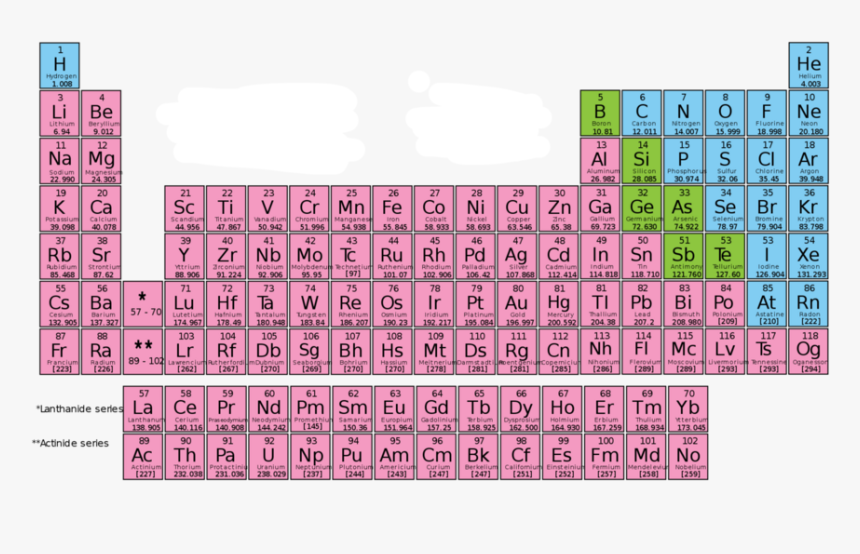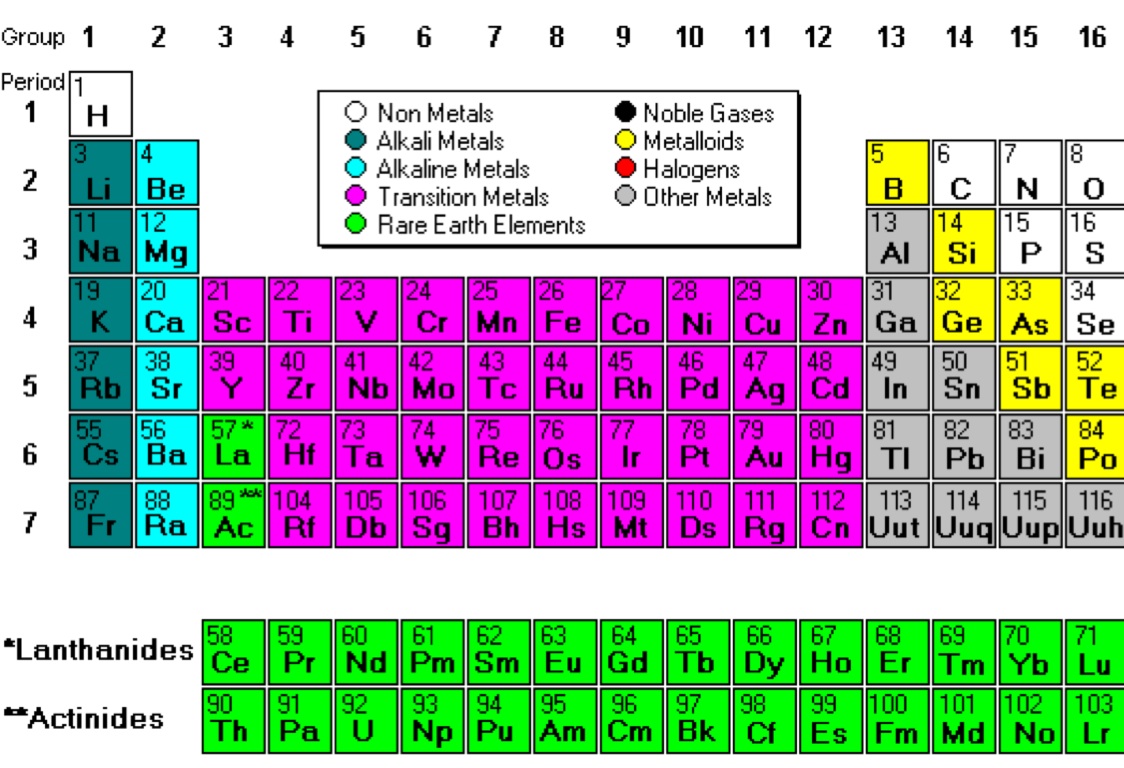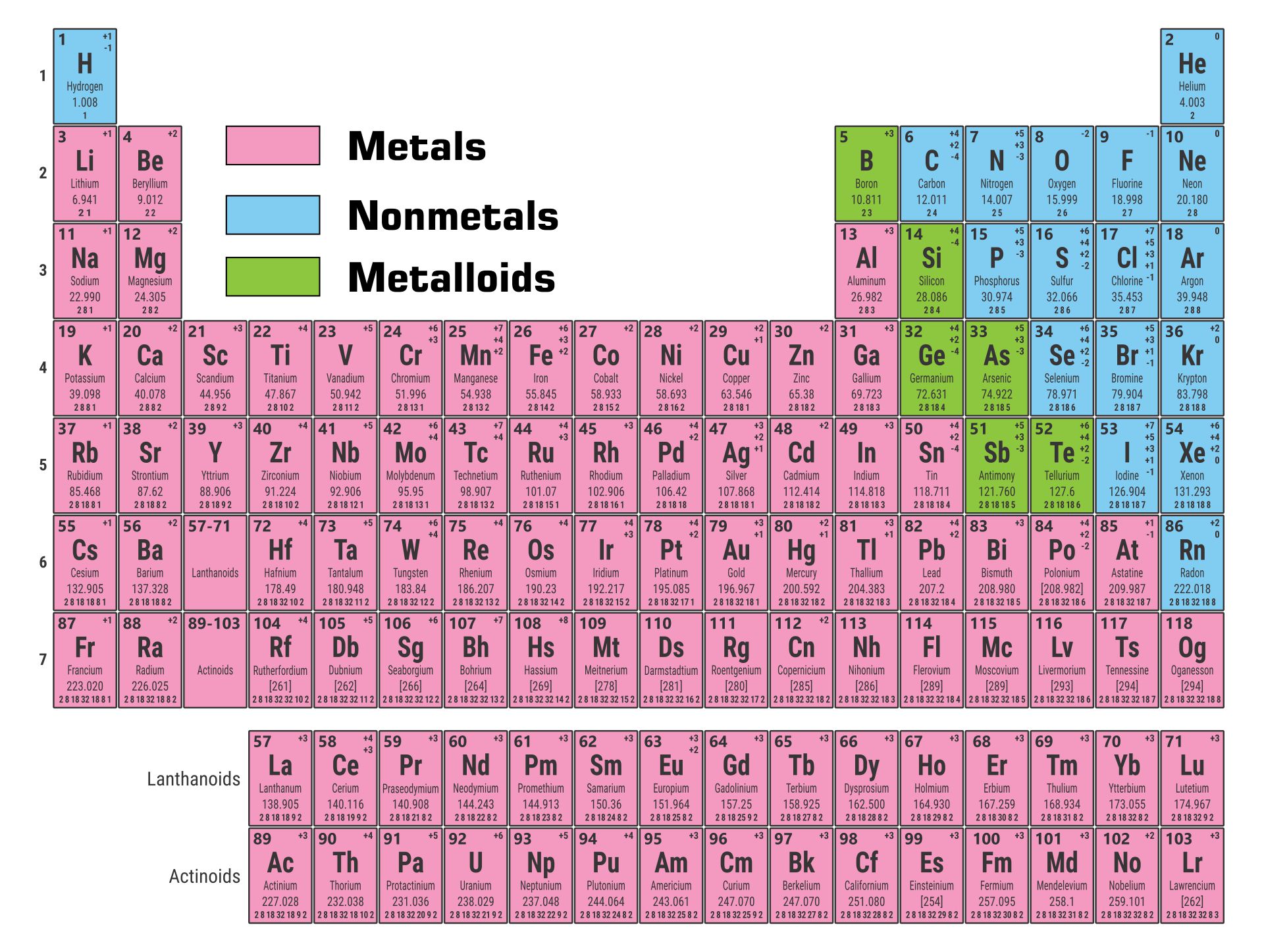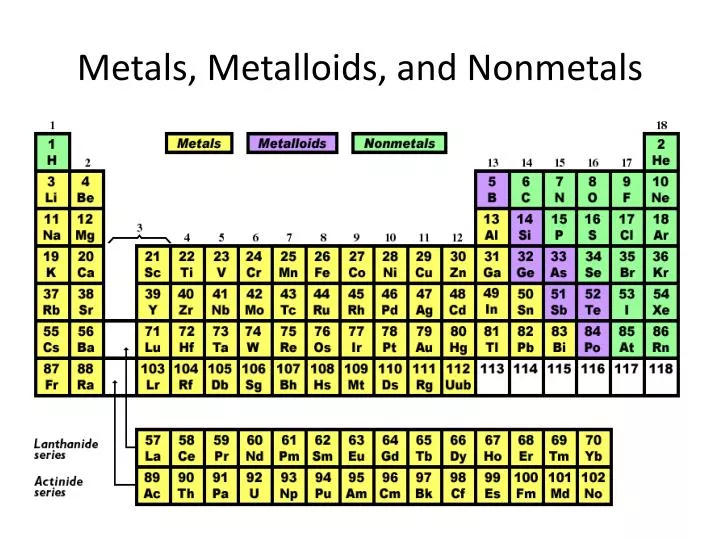Periodic Table Of Elements Metals Nonmetals Metalloids Printable - Web the periodic table: Web main team the primary selection of the periodic kitchen table comprises the elements with s and p electron designs. Elements numbered in blue are liquids at standard temperature and pressure (stp); Metals, nonmetals, and metalloids worksheet Metals with the exception of hydrogen, all elements that form positive ions by losing electrons during chemical reactions are called metals. Sodium and potassium have low melting points. The elements can be classified as metals , nonmetals, or metalloids. This group involves each alloys and nonmetals. Web metalloids are present between the metals and nonmetals on the periodic table. As currently categorized on enwiki.
Periodic Table Metals Nonmetals Metalloids 2019, HD Png Download kindpng
Metals are good conductors of heat and electricity, and are malleable (they can be hammered into sheets) and ductile (they can be drawn into wire). Web updated on january 28, 2020 elements of the periodic table are grouped as metals, metalloids or semimetals, and nonmetals. Alloys demonstrate different components, which include electric powered conductivity, lustre, and malleability. Elements which have.
Periodic Table Metals Nonmetals Metalloids Pdf Periodic Table Timeline
The exception is the element hydrogen. Because of this reason, they are also known as semimetals. Web updated on january 28, 2020 elements of the periodic table are grouped as metals, metalloids or semimetals, and nonmetals. Those in red are synthetic (all are predicted to be solid at stp ). Web the elements of the periodic table can be broken.
Periodic Table Showing Metals Metalloids And Nonmetals Periodic Table
Web the first table is a color version of the periodic table without the element names included. As currently categorized on enwiki. See also [ edit] the above documentation is transcluded from template:periodic table (metals and nonmetals)/doc. It also has a section to list the physical characteristics of each type of element. The periodic table is organized in families and.
Chemistry And More Metals, NonMetals, and Metalloids Periodic Table
Metalloids are elements that share properties with both metals and nonmetals. Elements to the left are metals and nonmetals are to the right. See also [ edit] the above documentation is transcluded from template:periodic table (metals and nonmetals)/doc. This periodic table shows the three different groups of elements. The metalloids are the elements that have properties that are intermediate between.
Free Printable Periodic Tables (PDF and PNG) Science Notes and Projects
Color coding for atomic numbers: ( edit | history) editors can experiment in this template's sandbox ( edit | diff) and testcases ( create) pages. Metals, nonmetals, and metalloids worksheet It also has a section to list the physical characteristics of each type of element. Many of these elements have biological roles.
12 Best Printable Copy Of Periodic Table
Boron, silicon, germanium, arsenic, antimony, and tellurium. Web the first table is a color version of the periodic table without the element names included. The colors correspond to the element groups with a handy key at the bottom of the page. As the metalloids have few properties of metals and few properties of nonmetals, they are also known as semimetals..
Periodic Table Metals Nonmetals And Metalloids Chart Periodic Table
Elements numbered in blue are liquids at standard temperature and pressure (stp); Additionally, we’ll protect a number of the more technical metallic alloys, which include gold and silver. The periodic table is organized in families and periods. Because of this reason, they are also known as semimetals. They are found between the metals and nonmetals.
Periodic Table Nonmetals Periodic Table Timeline
Web metals, nonmetals, and metalloids. Boron, silicon, germanium, arsenic, antimony, and tellurium. Metalloids can also be called semimetals. This group involves each alloys and nonmetals. Metals, nonmetals, and metalloids worksheet
Metals Nonmetals And Metalloids Located On Periodic Table 2023
See also [ edit] the above documentation is transcluded from template:periodic table (metals and nonmetals)/doc. The metalloid group separates the metals from the nonmetals. Alloys demonstrate different components, which include electric powered conductivity, lustre, and malleability. Web updated on january 28, 2020 elements of the periodic table are grouped as metals, metalloids or semimetals, and nonmetals. Metals, nonmetals, and metalloids.
Periodic Table With Metals Metalloids And Nonmetals Labeled Periodic
Metals are good conductors of heat and electricity, and are malleable (they can be hammered into sheets) and ductile (they can be drawn into wire). Web the first table is a color version of the periodic table without the element names included. The periodic table is organized in families and periods. This periodic table shows the three different groups of.
Additionally, we’ll protect a number of the more technical metallic alloys, which include gold and silver. As the metalloids have few properties of metals and few properties of nonmetals, they are also known as semimetals. Elements which have the metallic properties as well as nonmetallic properties are classified as metalloids. Web the first table is a color version of the periodic table without the element names included. The metalloids are the elements that have properties that are intermediate between those of metals and nonmetals. The worksheet is available as a free download in pdf format. Metals, nonmetals, and metalloids updated: The metalloid group separates the metals from the nonmetals. Metalloids are elements that share properties with both metals and nonmetals. Sodium and potassium have low melting points. Color coding for atomic numbers: Those in gray have not yet been discovered (they also have muted. These elements are distinctive in that they typically have low melting and boiling points, don't conduct heat or electricity very well, and tend to have high ionization energies and. Metals with the exception of hydrogen, all elements that form positive ions by losing electrons during chemical reactions are called metals. One useful way is by metals, nonmetals, and metalloids. Web tungsten has the highest melting point where as silver has low boiling point. The exception is the element hydrogen. See also [ edit] the above documentation is transcluded from template:periodic table (metals and nonmetals)/doc. Web main team the primary selection of the periodic kitchen table comprises the elements with s and p electron designs. Metals, nonmetals, and metalloids worksheet
Those In Black Are Solid At Stp;
The worksheet is available as a free download in pdf format. Web tungsten has the highest melting point where as silver has low boiling point. Web the periodic table: See also [ edit] the above documentation is transcluded from template:periodic table (metals and nonmetals)/doc.
The Colors Correspond To The Element Groups With A Handy Key At The Bottom Of The Page.
The periodic table is organized in families and periods. Web main team the primary selection of the periodic kitchen table comprises the elements with s and p electron designs. Elements to the left are metals and nonmetals are to the right. Those in red are synthetic (all are predicted to be solid at stp ).
The Metalloids Are The Elements That Have Properties That Are Intermediate Between Those Of Metals And Nonmetals.
It also has a section to list the physical characteristics of each type of element. This group involves each alloys and nonmetals. Metals with the exception of hydrogen, all elements that form positive ions by losing electrons during chemical reactions are called metals. The metalloids separate the metals and nonmetals on a periodic table.
Metals, Nonmetals, And Metalloids Updated:
As currently categorized on enwiki. Web periodic table (32 columns), colored by metal, metalloid, nonmetal. Web metalloids are present between the metals and nonmetals on the periodic table. The exception is the element hydrogen.









